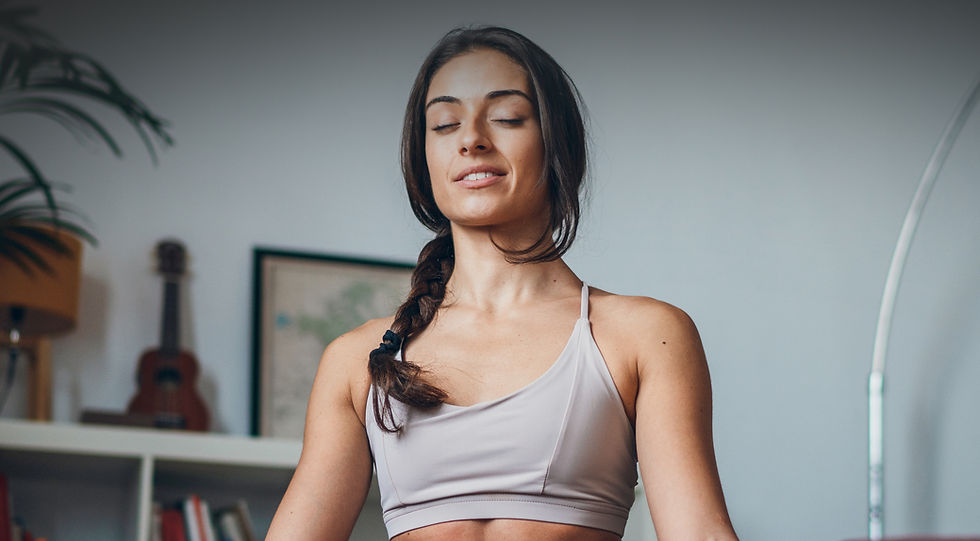

Qìgōng
MEDITATION
It's Not Just for Monks and Mystics
If you’ve ever thought meditation was too “out there” for you, you’re not alone. But mindful meditation is actually simple and down-to-earth. It’s just about learning to pay attention, on purpose, in a calm and steady way—no special beliefs or background required.
Real Benefits,
Backed by Science
Even a few minutes a day can make a difference. Research shows that mindfulness can
-
Reduce stress and anxiety
-
Improve focus and memory
-
Help you sleep better
-
Support emotional balance
-
Lower blood pressure
-
Strengthen your immune system
Feel More Grounded and At Ease
People who meditate regularly often report feeling
-
Less overwhelmed by daily stress
-
More patient with themselves and others
-
Better able to handle tough emotions
-
More connected to the present moment
Effortless Exercise for The Mind
Think of mindful meditation as mental fitness, only easy. Going for a walk improves your physical health. Sitting quietly and focusing your attention helps strengthen your mind and nervous system.
You don’t need to be “good at it.”
You just need to begin.
“Meditation is a vital way to purify and quiet the mind,
thus rejuvenating the body.”
— DEEPAK CHOPRA

Mindful Meditation
Mindfulness is about maintaining awareness in the present moment. In mindful meditation you observe thoughts and emotions without judgment and gently let them pass on by. When your focus is on your breath you are anchored in the present moment. You cannot get back a breath from your past nor can you access a breath from your future. You are in the present moment.
How To Meditate. Simple Steps.
-
Find a quiet, comfortable space
Choose a location where you won’t be disturbed. Sit comfortably—either on a cushion on the floor, cross-legged, or in a chair with your feet flat on the ground. Keep your back upright but not rigid.
-
Set an intention (optional)
Silently acknowledge why you’re here. It might be to cultivate calm, clarity, healing, or simply to be present.
-
Gently close your eyes or lower your gaze
Let your hands rest naturally on your knees or lap. Soften your face and shoulders.
-
Bring your attention to the breath
Notice your breathing just as it is. Feel the air moving in and out of your nose, or the rise and fall of your belly or chest. Don’t change it—simply observe.
-
Anchor your awareness
Choose a focal point: your breath, body sensations, or ambient sounds. Each time your mind wanders (and it will), gently return your attention to that anchor.
-
Practice non-judgmental awareness
Thoughts, emotions, and sensations will arise. Acknowledge them without labeling them as good or bad. Watch them pass like clouds drifting across the sky.
-
Use gentle redirection
When you catch yourself distracted, softly say to yourself “thinking” or “wandering,” and return to your breath or chosen anchor.
-
Stay present for a set time
Start with 5–10 minutes if you're new. With practice, extend to 20 minutes or longer. Use a soft timer if helpful.
-
Gently close the session
Take a few deep breaths. Wiggle your fingers and toes. When ready, open your eyes. Take a moment to notice how you feel.
-
Carry mindfulness into your day
Let the calm and awareness cultivated in meditation guide how you move, speak, and respond throughout your day.
Additional
Resources
Dig deeper into mindfulness. If you’d like to explore further, here are three excellent resources with clear instructions and research-backed insights on mindfulness and meditation: Mayo Clinic, UCLA’s Mindful Awareness Research Center, and UC Berkeley’s Greater Good Science Center. Each offers practical guidance to help you deepen your practice at your own pace.
“Breath is the remote control of the mind.”
— AMIT RAY


Setting
Up Your Practice
A few thoughtful choices can make your meditation practice easier to stick with—and more effective.
These tips are meant mainly for creating a consistent indoor practice space, drawn from teachers and experience. Take what feels useful, skip what doesn’t.
If you can practice outdoors, wonderful—the oxygen-rich air, the sound of water, and the quiet presence of wildlife can deepen your sense of connection. But for most of us, that’s not an everyday reality.
So we set up where we can, as best we can. As you read through these tips, picture how they might fit into your life.
May they help you settle more easily, stay with it longer, and enjoy the benefits of meditation even more.
1 / Create a Comfortable Space
-
Quiet: Select a spot with minimal distractions where you can feel safe and at ease.
-
Room Temperature: Set the thermostat to a comfortable level.
-
Lighting: To create a soothing atmosphere use natural lighting during the day and use dim lighting at night.
-
Props: For comfort and to help posture use cushions, blankets, pillows or a meditation chair.
2 / Mindset
-
Set Your Intention: What am I doing?
Improving focus? Unwinding? Recharging?
-
Distinct: Make this space special. Light a candle or incense. Or maybe set out a bowl of fresh fruit.
-
Be Receptive: Approach the session with openness and curiosity.
-
Eating: It's best to meditate before eating rather than after. If hungry take a small healthy snack.
3 / Dodge Distractions
-
Silence Devices: Turn off or silence your phone and other elecronic devices.
-
Apprise People: Inform people thoughtfully that you need uninterrupted time. Perhaps a sign on the door, a wink, a point or a text. Work something out.
-
Use Noise Cancelling Aids: Consider ear plugs, headphones or white noise to minimize external sounds.
-
Clock: Set up a timer so you don't have to check.
4 / Get Comfortable
-
Sit upright: It's best to sit upright with your back straight, but not rigid. Use a chair, a cushion, or the floor. Sit balanced with your head not forward or back, crown pointing to the heavens. Hands on knees or thighs, palms up or down. You may also use hand mudras.
-
Or Lie Down: For those who can't sit comfortably you can try lying on your back. Here props can come in particularly handy as many medical professionals will recommend a pillow under the thighs, knees or calves to aid posture. Hands by your sides, on your belly or where comfortable.
5 / Breathe
-
Deep Breaths: To slow your heart rate and prepare for meditation it helps to begin with a few deep breaths to signal relaxation. Breathe in to a count of four; breathe out through a pinhole to a count of at least six or eight.
-
Natural Rhythm: After a few breaths transition to breathing naturally. Now don't try to control it. (If it’s mindfulness you’re doing, just explore the breath).
You can begin with as little as two quiet minutes. If you have a comfortable chair or floor to sit on uninterrupted for a few minutes you can start now.
If now is not the time, decide when would be.
Early in the quiet of the morning often works best. You’ll gladly sacrifice the last SNOOZE in favor of your morning practice as soon as you begin to feel the life-changing benefits.
And 10 minutes of meditation will do so much more for your mind and body than those extra minutes of sleep will.
